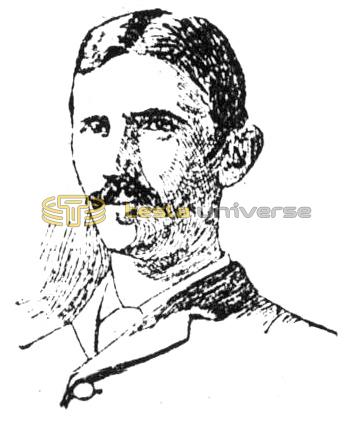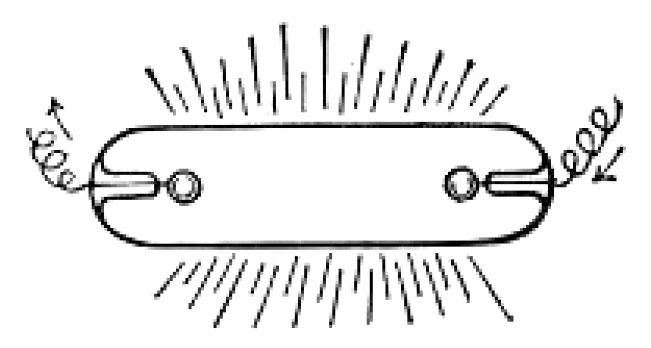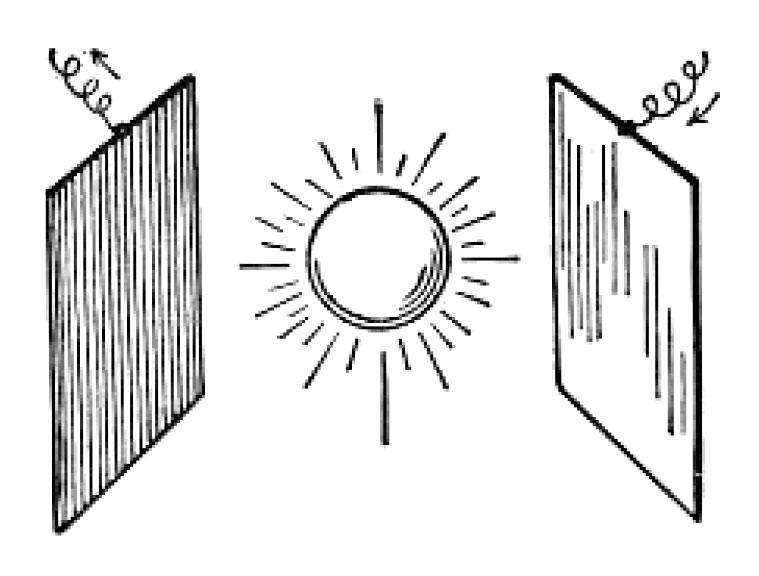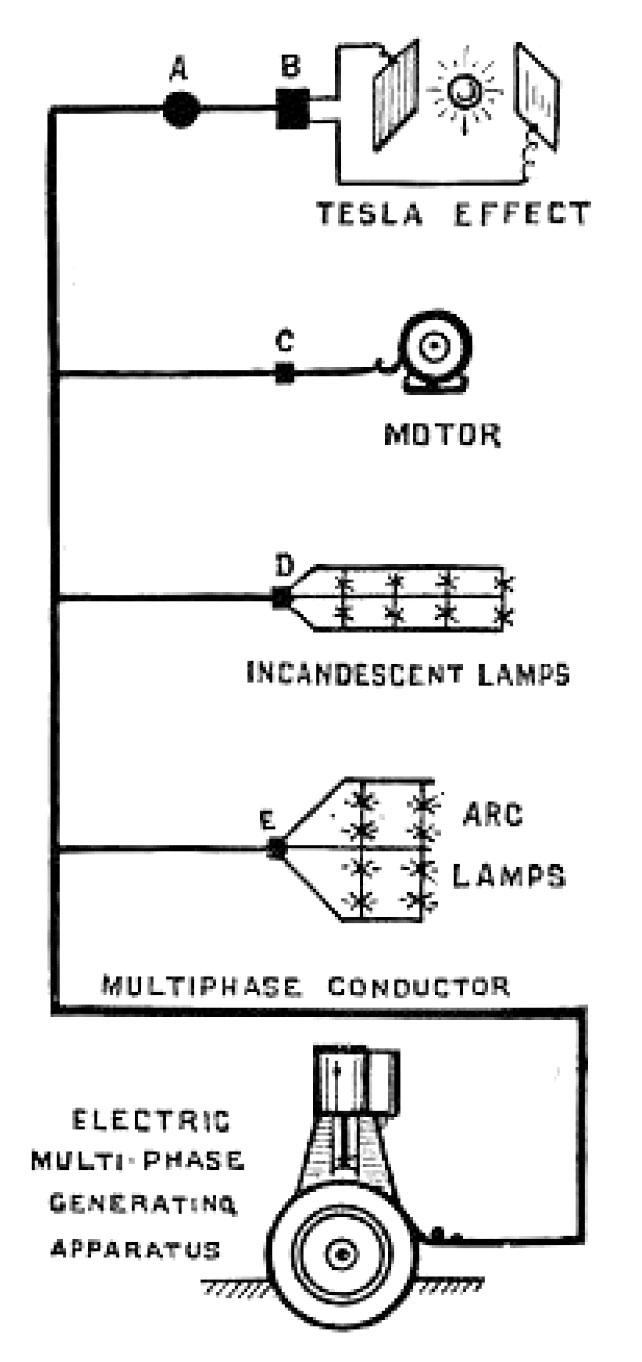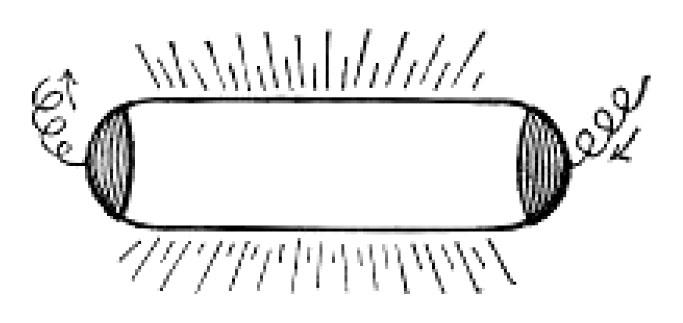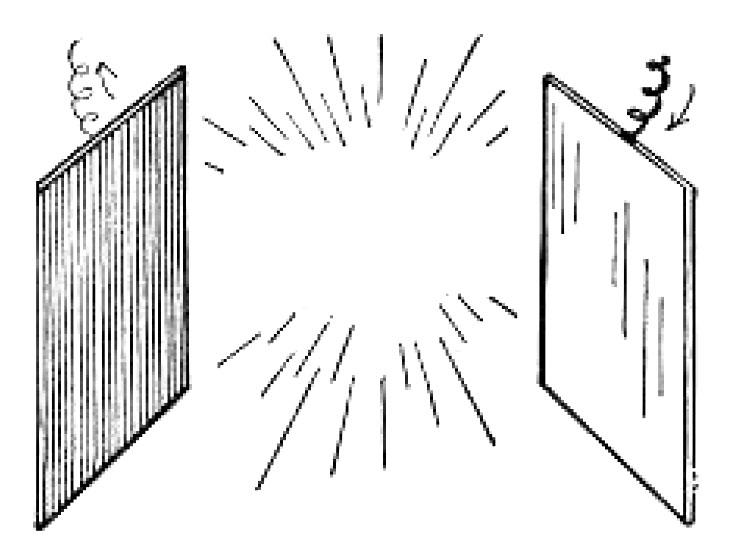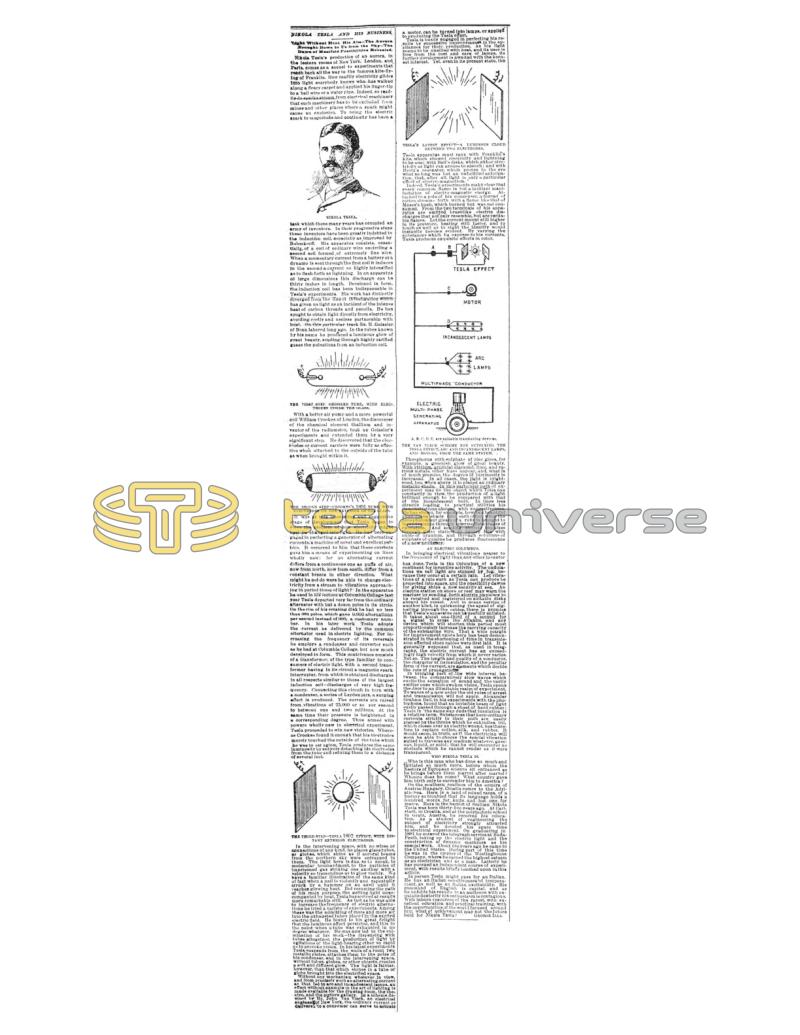
Nikola Tesla Articles
Nikola Tesla and his Business
Light Without Heat His Aim - The Aurora Brought Down to Us from the Sky - The Dawn of Manifold Possibilities Revealed.
Nikola Tesla's production of an aurora, in the lecture rooms of New York, London, and Paris, comes as a sequel to experiments that reach back all the way to the famous kite-flying of Franklin. How readily electricity glides into light, everybody knows who has walked along a fleecy carpet and applied his finger-tip to a bell wire or a water pipe. Indeed, so readily do sparks stream from electrical machinery that such machinery has to be excluded from mines and other places where a spark might cause an explosion. To bring the electric spark to magnitude and continuity has been a task which these many years has occupied an army of inventors. In their progressive steps these inventors have been greatly indebted to the induction coil, especially as improved by Ruhmkorff. His apparatus consists, essentially, of a coil of ordinary wire encircling a second coil formed of extremely fine wire. When a momentary current from a battery or a dynamo is sent through the first coil it induces in the second a current so highly intensified as to flash forth as lightning. In an apparatus of large dimensions this discharge can be thirty inches in length. Developed in form, the induction coil has been indispensable in Tesla's experiments. His work has distinctly diverged from the line of investigation which has given us light as an incident of the intense heat of carbon threads and pencils. He has sought to obtain light directly from electricity, avoiding costly and useless partnership with heat. On this particular track Dr. H. Geissler, of Bonn, labored long ago. In the tubes known by his name he produced a luminous glow of great beauty, sending through highly rarified gases the pulsations from on induction coil.
With a better air pump and a more powerful coil William Crookes, of London, the discoverer of the chemical element thallium and inventor of the radiometer, took up Geissler's experiments and extended them by a very significant step. He discovered that the electrodes or current carriers were fully as effective when attached to the outside of the tube as when brought within it.
It was at this interesting and suggestive stage of development that Tesla begun to solve the problem of how electricity might best be changed into light. He had been engaged in perfecting a generator of alternating currents, a machine of novel and excellent pattern. It occurred to him that these currents gave him a means of experimenting on lines wholly new; for an alternating current differs from a continuous one as puffs of air, now from north, now from south, differ from a constant breeze in either direction. What might he not do were he able to change electricity from a stream to vibrations approaching in period those of light? In the apparatus he used in his lecture at Columbia College last year Tesla departed very far from the ordinary alternator with but a dozen poles in its circle. On the rim of his rotating disk he had no less than 384 poles, which gave 9,600 alternations per second instead of 300, a customary number. In his later work Tesla adopts the current as delivered by the common alternator used in electric lighting. For increasing the frequency of its reversals he employs a condenser and converter such as he had at Columbia College, but now much developed in form. This contrivance consists of a transformer, of the type familiar to consumers of electric light, with a second transformer having in its circuit a magnetic spark interrupter, from which is obtained discharges in all respects similar to those of the largest induction coil discharges of very high frequency. Connecting this circuit in turn with a condenser, a series of Leyden jars, a surging effect is produced. The currents are raised from vibrations of 25,000 or so per second to between 1,000,000 and 2,000,000. At the same time their pressure is hightened in a corresponding degree. Thus armed with powers wholly new in electrical experiment, Tesla proceeded to win new victories. Whereas Crookes found it enough that his electrodes merely touched the outside of the tube which he was to set aglow, Tesla produces the same luminosity by entirely detaching his electrodes from the tube and retiring them to a distance of several feet.
In the intervening space, with no wires or connections of any kind he places glass tubes, or globes, which shine as if auroral beams from the northern sky were entrapped in them. The light here is due, so to speak, to molecular bombardment, to the particles of imprisoned gas striking one another with a velocity so tremendous as to glow visibly. We have a familiar illustration of the same kind of fact when a nail is violently and repeatedly struck by a hammer on an anvil until it reaches glowing heat. But resuming the path of his main purpose, the getting of light unaccompanied by heat, Tesla has arrived at results more remarkable still. As fast as he was able to increase the frequency of electric alternations he tried a variety of experiments. Among these was the admitting of more and more air into the exhausted tubes placed in the excited electric field. He found to his great delight that the luminous effect persisted, and this to the point when a tube was exhausted in no degree whatever. He was now led to the culmination of his work the dispensing with tubes altogether, the production of light by agitations of the light-bearing ether so rapid as to provoke vision. In his latest experiments Tesla suspends from the walls of a room two metallic plates, attaches them to the poles of his condensator, and in the intervening space, without tubes, globes, or other objects, creates a soft and diffused glow. The light is fainter, however, than that which shines in a tube or globe brought into the electrified space.
Without any mechanism whatever in view, and from precisely such an alternating current, as that fed to arc and incandescent lamps, an effect without example in the art of lighting is made available for the drawing-room, the theater, and the picture gallery. In a scheme devised by John Van Vleck, an electrical engineer of New York, the ordinary current as delivered to a consumer can serve to actuate a motor, can be turned into lamps, or applied to producing the Tesla effect.
Tesla is busily engaged in perfecting his results by successive improvements in the appliances for their production. As his light seems to be unallied with heat, and its user is free from the cost and care of lamps, its further development is awaited with the keenest interest. Yet, even in its present state the Tesla apparatus must rank with Franklin's kite, which showed electricity and lightning to be one; with Bell's disks, which either electricity or light can arouse to speech; and with Hertz's resonator, which proves to the eye what so long was but an unfulfilled anticipation, that, after all, light is only a particular effect of electro magnetism.
Indeed, Tesla's experiments make clear that every common flame is but a brilliant manifestation of electro-magnetic energy. Attached to a pole of his condenser, a thread of cotton streams forth with a flame like that of Moses's bush, which burned but was not consumed. From the two terminals of his apparatus are emitted brush-like electric discharges that not only resemble, but are, veritable flames. Let the current mount still higher in its pressure, beating still faster, and to touch as well as to sight the identity would instantly become evident. By varying the substances which he exposes to his currents, Tesla produces exquisite effects in color.
Phosphorus with sulphate of zinc gives, for example, a greenish glow of great beauty. With yttrium, artificial diamond, lime, and various metals, other hues appear, and, what is of much promise, the degree of luminosity is increased. In all cases, the light is brightened, too, when above it is placed an ordinary metallic shade. In this particular path of experiment may lie the object which Tesla has constantly in view, the production of a light brilliant enough to be compared with that of the incandescent bulb. In lines less directly leading to practical utilities his demonstration abound with suggestiveness. He has shown, for example, how two beautiful phenomena shade into each other, when the phosphorescent gleam of a ruby is brought to incandescence through intermediate stages of excitation. And sending electric impulses through glass stained to canary hue with oxide of uranium, and through solutions of sulphate of quinine he produces fluorescence of a new brilliancy.
In bringing electrical vibrations nearer to the frequency of light than any other inventor has done, Tesla is the Columbus of a new continent for inventive activity. The undulations we call light are stopped by fog, because they occur at a certain rate. Let vibrations of a rate such as Tesla can produce be projected into space, and the possibility dawns for giving ships a new security at sea. An electric station on shore or reef may warn the mariner by sending forth electric impulses to be received and registered on suitable disks aboard his vessel. And in ocean service of another kind, in quickening the speed of signaling through the cables, there is promise that Tesla's apparatus can be usefully enlisted. It takes about one-third of a second for a signal to cross the Atlantic, and any device which will shorten this period must proportionately increase the carrying capacity of the submarine wire. That a wide margin for improvement exists here has been demonstrated in the shortening of time in transmission effected since cables were first laid. It is generally supposed that, as used in telegraphy, the electric current has an exceedingly high velocity from which it never varies. Not so. The length and quality of a conductor, the character of its insulation, and the peculiar form of the current, are elements which decide the rate of propagation.
In bridging part of the wide interval between the comparatively slow waves which excite the sensation of sound and the vastly swifter ones which awaken vision, Tesla opens the door to an illimitable realm of experiment. To waves of a new order the old rules of arrest and transmission will not apply. Alexander Graham Bell, in his experiments with the photophone, found that an invisible beam of light easily passed through a sheet of hard rubber; Tesla in the same way finds that insulation is a relative term. Substances that keep ordinary currents strictly to their path are easily pierced by the throbs which he enkindles. Oil, which closes over an electric wound, has therefore to replace cotton, silk, and rubber. It would seem, in truth, as if the electrician will soon be able to choose the special vibration suited to traverse any medium whatever, gaseous, liquid, or solid; that he will encounter no obstacle which he cannot render as it were transparent.
Who is this man who has done so much, and initiated so much more, before whom the Nestors of European science sit entranced as he brings before them marvel after marvel? Whence does he come? What country gave him birth only to surrender him to America?
On the southern confines of the empire of Austria-Hungary, Croatia comes to the Adriatic Sea. Here is a land of mixed races, of a history so troubled that its language holds a hundred words for knife and but one for mercy. Here in the hamlet of Smiljan, Nikola Tesla was born thirty-five years ago. At Carlstadt, in Croatia, and at the polytechnic school in Gratz, Austria, he received his education. As a student of engineering the subject of electricity strongly attracted him, and he devoted his spare time to electrical experiment. On graduating in 1881 he entered the telegraph service at Buda-Pesth, taking up the electric light and the construction of dynamo machines as his special work. About five years ago he came to the United States. During part of this time he was in the employ of the Westinghouse Company, where he earned the highest esteem as an electrician and as a man. Latterly he has pursued an independent course of experiment, with results briefly touched upon in this article.
In person Tesla might pass for an Italian. He has the Italian sensitiveness of temperament, as well as an Italian excitability. His command of English is capital, and as he unfolds his results to an audience with exquisite dexterity his enthusiasm is contagious. With inborn resources of the rarest, with excellent education, and practical training, with the opportunities of the world focused around him, what of achievement may not the future hold for Nikola Tesla?
